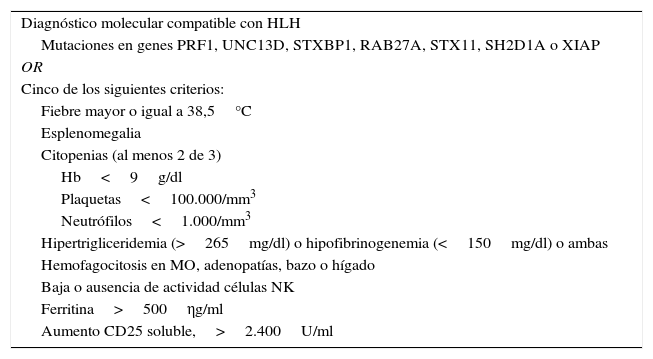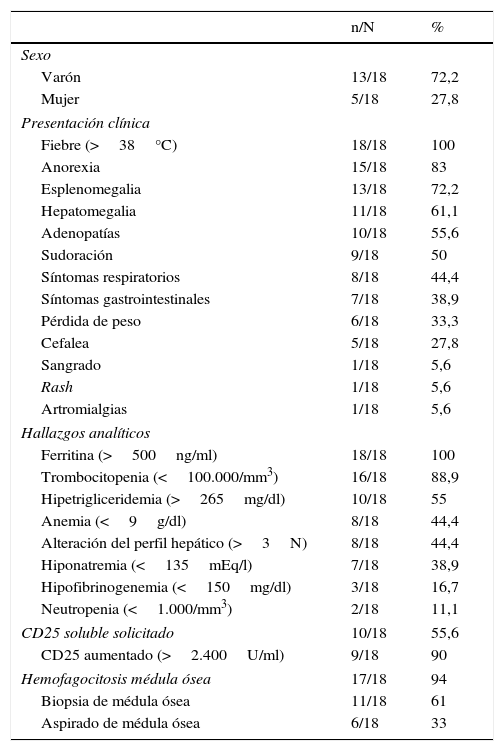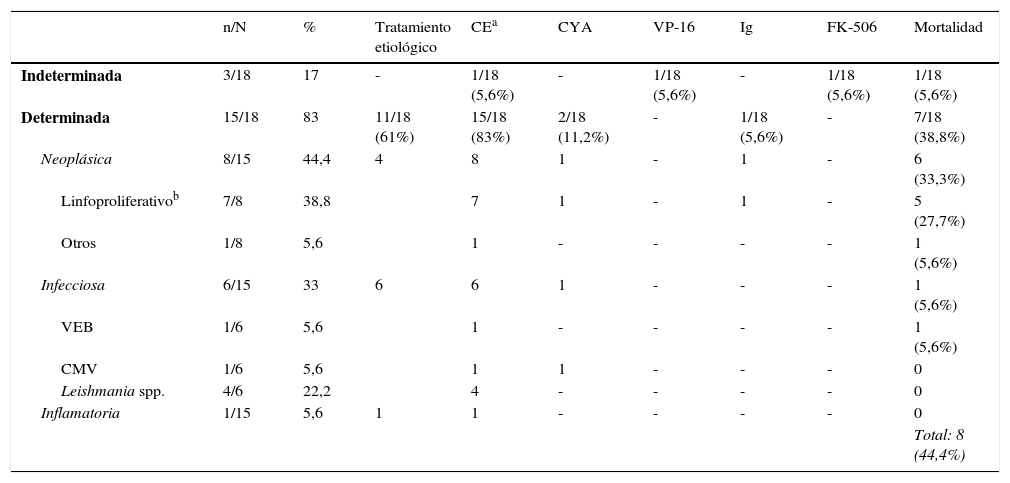La hemophagocytic lymphohistiocytosis (HLH, «linfohistiocitosis hemofagocítica») es una entidad grave, producida por una incorrecta regulación de la respuesta inmunológica frente a diversos estímulos del sistema inmunitario. Su diagnóstico y tratamiento precoz suponen un reto para el clínico.
Pacientes y métodoHemos realizado un estudio descriptivo retrospectivo de los pacientes adultos diagnosticados de HLH, según los criterios de la Histiocyte Society, entre los años 2010 y 2015 en nuestra institución, analizando sus características clínicas, el estudio diagnóstico-etiológico y su evolución.
ResultadosSe analizaron 18 pacientes. La mediana de tiempo al diagnóstico fue de 24 días. La etiología fue neoplásica en 8 casos (hematológica en 7), infecciosa en 6 (leishmaniasis visceral en 4), inflamatoria en uno, y en los 3 restantes, idiopática. Se realizó tratamiento en 16 pacientes con corticoides, asociando ciclosporina en 2, inmunoglobulinas en uno, y etopósido con tacrolimus en otro.
ConclusionesDestacamos la escasa utilización de etopósido en el tratamiento dirigido, el actualmente recomendado. La mortalidad global fue del 44%, asociada a la etiología neoplásica principalmente (67 frente a 16,6% de mortalidad en la etiología infecciosa, p<0,05).
Hemophagocytic lymphohistiocytosis (HLH) is a serious condition, caused by an improper regulation of the immune response to different stimuli of the immune system. Early diagnosis and treatment are a challenge for the clinician.
Patients and methodWe conducted a retrospective study at our institution between 2010 and 2015, of adult patients diagnosed with HLH, in accordance with the criteria of the Histiocyte Society, analyzing their clinical characteristics, diagnostic and etiological studies and the outcome.
ResultsEighteen patients were analyzed. Median time to diagnosis was 24 days. We found neoplastic etiology in 8 cases (7 hematologic), while it was infection-related in 6 (4 visceral leishmaniasis), and an inflammatory disease in one. In the remaining 3, an underlying cause for the HLH was not found. Course of treatment was corticosteroids in 16 patients, associated with cyclosporine in 2 of them, one received immunoglobulins, while another received etoposide with tacrolimus.
ConclusionsWe emphasize the scarce use of etoposide therapy, the currently recommended treatment. Overall mortality was 44%, mainly associated with neoplastic etiology (67 compared to 16.6% mortality in infection-related etiology, P<.05).
Artículo
Comprando el artículo el PDF del mismo podrá ser descargado
Precio 19,34 €
Comprar ahora










